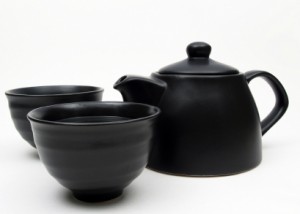Java. Café. Kafe. Kaffee. Kava. Coffee. To your health!
 Last week I told you about research findings linking green tea to a lower stroke risk. However, while green tea rocks your socks off when it comes to health, one of my favourite elixirs – coffee — isn’t too far behind in that department. In fact, despite years of negative publicity surrounding coffee, its rightful place in health and diet is being reclaimed. Mind you, too much of a good thing is never a good thing, but there has been renewed interest the multitude of compounds in coffee that extend far beyond the most popular, i.e. caffeine.
Last week I told you about research findings linking green tea to a lower stroke risk. However, while green tea rocks your socks off when it comes to health, one of my favourite elixirs – coffee — isn’t too far behind in that department. In fact, despite years of negative publicity surrounding coffee, its rightful place in health and diet is being reclaimed. Mind you, too much of a good thing is never a good thing, but there has been renewed interest the multitude of compounds in coffee that extend far beyond the most popular, i.e. caffeine.
Globally, 7 million tons of coffee is consumed per year. Wow! That’s a a lot of beans. Moreover, just think of the infinite tons that have been consumed since coffee’s energizing properties were first discovered prior to the start of the 14th Century in Ethiopia. Aside from it stimulative properties, what other treasures lurk each time we reach for a cuppa?
According an extensive review in the online edition of Maturitas, there may be a lot to be gained by consuming this delightful beverage (can you tell how excited coffee makes me?!). Indeed, when the researchers searched and evaluated 22 years of articles, they discovered that the compounds in coffee that are most beneficially linked to health are polyphenols, the most abundant antioxidants in the human diet. Much like chocolate and even green tea, coffee is rich in polyphenols, and the most common are known as phenolic acids, which appears to slow the release of glucose into the bloodstream. This may be an important reason why research has repeatedly shown that coffee has a protective effect against diabetes, although one needs to have a moderate to high intake (4-6 cups a day) to achieve the best protection.
Drinking coffee may also help defend against liver damage, regardless if the culprit is a virus, drugs, alcohol or abnormal, malignant cells, although experts can’t yet explain why. Still, in studies, this protection was seen in both healthy and at-risk populations in numerous studies.
Another potentially important benefit of coffee is a reduced risk of Parkinson’s Disease; significant reviews have suggested that this reduction may be as high as a third. An important part of this story is that in postmenopausal women, HRT may shift this benefit to the negative side, and actually convert the protective role of caffeine into a risk factor for Parkinson’s (yet another reason to reconsider taking hormones).
So, what about heart disease? The buzz has long been that drinking coffee can increase blood pressure, worsen irregular heart rhythms and raise cholesterol levels. The review authors say that better and more ample clinical data, coupled with a greater understanding of the multiple components of coffee other than caffeine, have changed the paradigm. Importantly, the very compounds mentioned earlier — phenolic acids – and the pattern they form depending on the variety of coffee, roasting and processing, may help neutralize or reverse the negative. The most important hero in this story is a derivative of a common type of phenolic acid: chlorogenic acid.
Chlorgenic acid improves the function of cells that line the blood vessels and may work to attenuate increases in blood pressure. In women, coffee intake and perhaps the activity of chlorogenic acid may lower coronary heart disease. Moreover, detailed evaluation of available evidence fails to demonstrate a higher risk for abnormal heart rate or sudden cardiac death. And, while the verdict is still out, the researchers say that coffee may even exert a protective effect against cancer, possibly asa result of its antioxidant/antiinflammatory effect.
Before you up your daily caffeine intake, keep in mind that there is still much to be discovered about coffee. Many of these studies were observational studies, meaning that there was no attempt to control the outcomes with treatment. And response to certain compounds within coffee may be individually-driven. Still, in moderation, coffee may be less harmful (and more beneficial) than we have been led to believe.
Coffee equals the black, irreplaceable elixir in any language. To your health? Indeed!
Read More
Tea, for two…or two, for
a reduced stroke risk?!
I have some exciting news for you dear readers: the American Heart Association announced yesterday that incorporating two cups of green tea and even a cup of coffee a day can help reduce stroke risk.
The accruing evidence for the value of green tea or coffee in the fight against certain diseases has been steady but mixed. In other words, there has been a mixed bag of findings with some research showing green tea’s advantage when it comes to heart disease risk (but not stroke) and coffee’s ability to reduce the likelihood of diabetes and certain types of cancer. But these studies have focused on different outcomes, have been small and have’t always included the same type of people in terms of age, gender or overall health.
This time, Japanese researchers asked over 83,000 adults about their daily green tea and coffee drinking habits and then followed them for 13 years. Over this time period, they also measured stroke, heart attacks and sudden death from heart disease, and accounted for factors that could also affect stroke risk, such as smoking, alcohol, BMI, diabetes, high blood pressure, exercise, and daily diet (fruit, vegetables and fish intake). The age range was between 45 and 74, the pool was pretty equally balanced in terms of gender and all were free of cancer and heart disease at the start.
So, what did they learn?
Drinking two to three cups of green tea a day was linked to a 14% lower risk of stroke; four or more cups was linked to a 20% lower risk. Among coffee drinkers, just one cup a day (6 oz serving, caffeinated) appeared lower stroke risk by as much as 20%. And for either group? Both had about a third lower risk of experiencing a type of stroke (intracerebral hemorrhage) in which a blood vessel bursts and there is bleeding inside the brain.
There are a lot of theories why green tea and coffee are heart disease busters. Green tea, for example, contains antioxidants called catechins, which are believed to protect the vascular system. Coffee contains substances that may decrease insulin sensitivity and improve overall blood glucose levels. Together, they appear to create a super heart protective benefit.
Heart disease is the number one killer of women and risk grows as we age. Diet and exercise, cigarette smoking and alcohol all play important roles. And it looks like just a few cups of green tea or a cup of coffee daily can help cut our risk substantially while still enriching our health in other ways. Cuppa anyone?!
If you are interested in learning more, the study is reported in Stroke: Journal of The American Heart Association.
Read MoreWednesday Bubble: Pink Elephant Redux
Today’s bubble features an oldie but goodie. The more things change, the more they haven’t.
Isn’t it time that we women start to acknowledge the pink elephant in the room???
In 1980, I worked as an intern on the municipal bonds floor of a well-known brokerage/financial institution. Although it was certainly not my “thang,” I learned a tremendous amount about how the business world operated, and most importantly, about the games that people play.
One thing that struck me in particular at that time was the role of women in this business and how they dressed and behaved. Women were not abundant in positions of power, and those who were, well, in some respects, they emulated men; they were aggressive, competitive and not particularly kind to one another.
Clearly, things have changed drastically in the almost three decades that have followed. But one thing that hasn’t changed much is how sisters act in the workplace.
A line from this wonderful article that appeared in the New York Times several years ago made me realize that certain stereotypes continue to perpetuate bad behavior. And, that as Author Peggy Klaus so aptly writes, “the pink elephant is lurking in the room and we pretend it’s not there.”
The pink elephant is lurking in the room.
Klaus’ point is that rather than help build each others career, women often work to derail each other, engaging instead in “verbal abuse, job sabotage, misuse of authority and destroying of relationships.” She cites data suggesting that this type of behavior is directed from women to women >70% of the time, while the men who are “bullies in the workplace,” direct their aggression equally to both genders.
Klaus offers numerous reasons why women become aggressors in the workplace: scarcity of positions, bootstrap (I pulled myself up, why should I help you?) and hyperemotionality that leads to an overinvestment in workplace occurrences that cause them to hold grudges.
Her point, however, is not to determine the why but rather, engage one another to put an end to this type of behavior.
I’ve written previously that as we grow older, friendships and support of one another are essential to our overall wellbeing. Regardless of whether its in the workplace or in our personal lives, supportive relationships allow the soul to flourish and grow. Personal resources as they pertain to social support also help see us through the rougher aspects of menopause.
Should women give preferential treatment to one another? No, absolutely not. But as Klaus says, perhaps we should start treating one another as we want our “nieces, daughters, granddaughters an sisters to be treated.” We should simply… acknowledge the pink elephant in the room. And show it the door.
Read MoreEvery breath you take
We know that deep, focused breathing is a great stress buster, easy to practice and even easier to learn. However, it looks as though the breath you exhale may also be a harbinger of the very stress that you are letting go of. In fact, UK researchers have discovered that the breath has certain markers that may allow it to become a stress detective, if you will.
These markers are a mouthful, literally! Known as 2-methylpentadecane and indole, these very compounds appeared to increase following a stress exercise in 22 young adults who offered their breath for science! Using a scientific technique to analyze breath samples when the volunteers were calm and then stressed, and also measuring heart rates and blood pressures, the researchers were able to identify six compounds in breath related to stress but only the two mentioned above increased. What’s more, the stress response — faster breath and increased heart rate — appeared to change the normal composition of the breath.
I never thought that I’d be writing about breath profiling on this blog but it fascinating. Clearly, changes in breathing patterns have effects — either positive or negative — in the body. But would it be possible to develop a simple test to help suss out underlying stress, the type that over time, can lead to burnout, depression and of course, illness?
Only time will tell and larger studies are needed. But the very breath you take might be equal to the stress you make.
Meanwhile? Inhale. Hold. Release. Every breath you take matters.
Read MoreSocial interactions are good for your health
This isn’t the first time that I’ve written about the benefits of social interactions in terms of health. And it likely won’t be the last! In fact, data collected in roughly 53,000 Americans over a 36 year time period show that both personal and impersonal interactions, that is, visits with relatives, neighbors or friends or in bars (personal) or memberships in in organization, sports clubs, youth groups, etc (impersonal) can have a significant impact on health.
Strangely, during the time of the study (which is published in the March/April issue of the American Journal of Health Promotion), significant declines were seen in impersonal and certain types of personal interactions. People were volunteering less or spending less time in cause-related organizations. And, people spent less time visiting neighbors.
The middle-agers happened to be the group with the largest income levels, highest workforce participating and greatest full time working percentage. And while they had opportunity costs when it came to time and how they chose to spend it when they weren’t working, it appeared that devoting more time to friendships, especially close friendships, was important to health. So was the time spent in health/sports clubs.
The takeway? Having friends or other interpersonal interactions tended to be associated with a higher probability of being in very good or excellent health.
However, timing is everything and this information was collected before the economic downswing and the loss of millions of jobs, especially among mid-lifers. Still, it does offer up an important message:
The cost of time may be greater than one believes. Be sure that part of your time allotment is spent cultivating and spending time with friends. They are critical to mental wellbeing, staving off depression, increasing longevity and reducing stress.
Speaking of which….it’s
Be sure to reach out and touch someone in your inner or outer circles who you’ve not interacted with of late. Call a friend, drop a note, extend a helping hand. That time allotment might be the best you spend today.
Read More







